The automotive aftermarket has long been driven by the general automotive industry, unable to forge its own path due to its reliance on understanding the latest developments of carmakers and OEM suppliers.
This is truer than ever before in today’s society. But there are also opportunities for the aftermarket to lead, through its understanding of older vehicles. Yet wider challenges persist, and must be overcome, and to do this, the industry needs to stand together.
This was the rallying cry from the Independent Automotive Aftermarket Federation (IAAF) annual conference, taking place in December 2022.
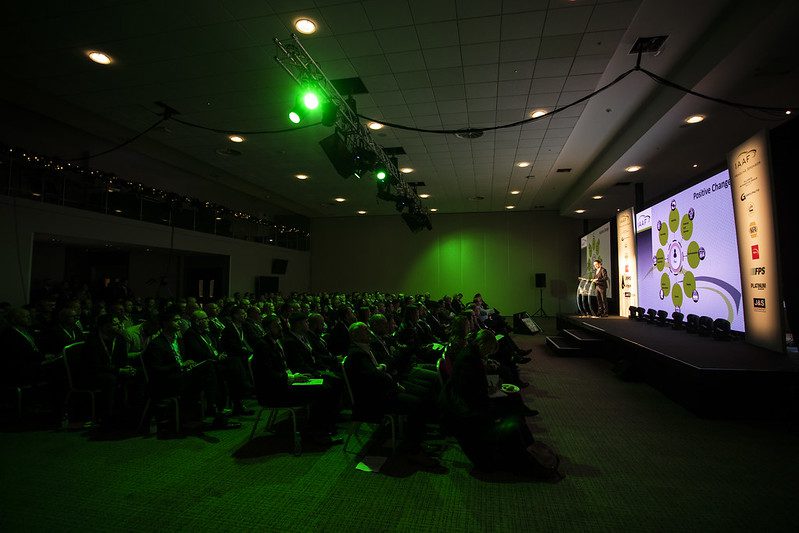
“We have endured a reality we have never experienced before, both personal and professional. The pandemic brought out the best in the aftermarket, and the IAAF played a key role, keeping people informed,” commented Mark Field, IAAF Chief Executive, in his opening address at the IAAF Conference.
In the last twelve months, the aftermarket has been faced with numerous challenges, including discussions around Block Exemption, another challenge to the MOT, the potential of skills shortages and a cost-of-living crisis that is pushing up rates. All this comes on the back of increasing electrification in the automotive industry, something the independent aftermarket needs to catch up with.
Who controls the aftermarket?
The first presentation of the day was made by Neil Pattemore, IAAF and UK AFCAR Technical Director. With the changes the automotive industry is facing, his talk asked the question ‘who controls the aftermarket?’
“Ultimately the legislator because they set the criteria,” commented Pattemore. “Why is that important? Very simply, we are all here to provide competitive choices to consumers. If they did not want what we, as the aftermarket, offered, they would just go to the main dealers. But over 70 % do not, they come to the aftermarket. That is what we need protecting.”
Changing times with sophisticated vehicles
While legislation changes, so to do the vehicles to which they are legislating. Technology means that today’s cars are less about the engines and wheels, but the systems and software within. Drivers can buy a car, drive it away from the dealership, then add options later, through subscription services and over-the-air (OTA) updates.
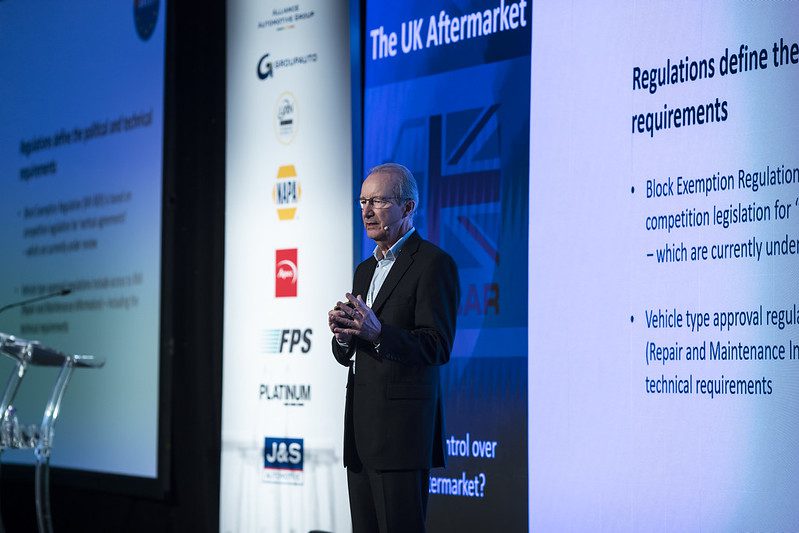
“The vehicle manufacturer has directly, as well as indirectly, entered the aftermarket as a service provider,” Pattemore told the IAAF Conference. “So, they are now offering services. Many of you have probably seen BMW offering OTA services to switch on your heated steering wheel or seats, or other services in the car, like Spotify, whatever else it may be. the reason they are doing that is, well, you only need your heated seats on certain days.”
While this may not be a competition issue for the aftermarket per se, what the OEM is doing is embedding the software in the car and accessing it through an interface which is not the OBD port. Ultimately, this means they can access the car while it is being driven, and therefore, offer bespoke services. They can then keep the aftermarket tied to the OBD connector when the vehicle is static in the workshop.
“That is not fair competition,” stated Pattemore to the IAAF Conference audience. “This is being driven by vehicle design and functionality. Newer cars have fewer ECUs, as they are able to process data and work as ‘super computers’ and this has changed how carmakers have access to the vehicle.”
“They rent at a competitive rate, and competitive repair costs become a critical part of the offering. But it is the vehicle manufacturers who control the repair services.”
Embracing electric vehicle opportunities
Following on from Pattemore was Matt Cleevely, owner of Cleevely EV, a family-run independent garage that has made a name for itself by becoming one of the biggest independent electric vehicle repairers in the country.
Cleevely came to the IAAF Conference to highlight the benefits and opportunities the new technologies offer aftermarket businesses. He explained how he found that when looking to buy an EV he had a horrendous experience and decided to use it as an opportunity, educating potential buyers to the benefits of electric vehicles. This has evolved into training other technicians on EVs, speaking on EV related matters, and even becoming a parts distributor, buying in old EV batteries to help fix vehicles.
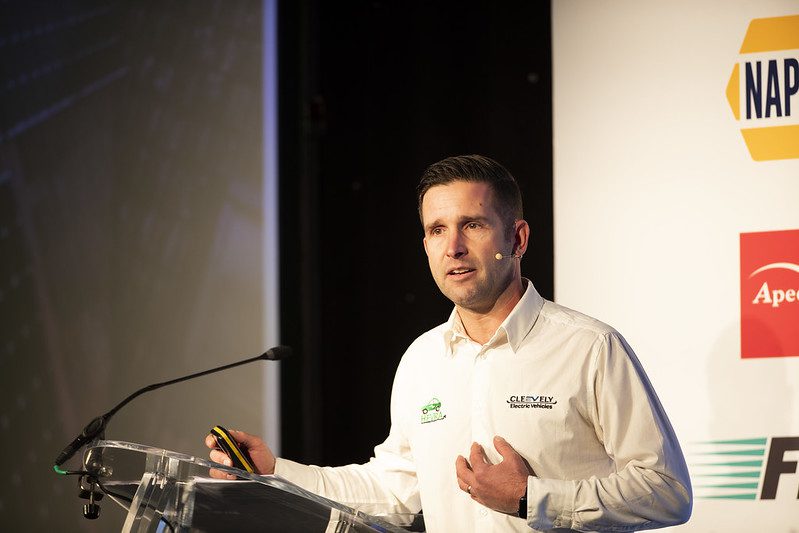
“It surprises me how many garages have just become so scared of this kind of technology. Lots of what my workshop does day today, it is still just working on the car parts. Now we do get involved with the high voltage side of things as well. But it is still in the minority.”
There are also opportunities for garages to take vehicles in from main dealerships, especially some which are closing or changing allegiances following manufacturer withdrawals – such as Mitsubishi, with the Outlander PHEV still a popular model.
He told the IAAF Conference audience that alongside these opportunities, there is more potential for repairs and parts replacement with electric vehicles: “Cars are cars, they still have steering, suspension, brakes, tyres and so on. The Model S, for example has door handles that needs repairing, headlights too. These cars are heavy, so suspension issues arise, as do corrosion problems on brakes. The vehicle we profit from the most is the Tesla Model S, which wears its suspension out like it’s going out of fashion!”
What does the data tell us?
After lunch, the IAAF Conference audience returned to their seats to hear from Quentin Le Hetet, head of GIPA UK, who presented some of the latest data gathered around the aftermarket.
Firstly, Hetet highlighted that new car sales are currently far behind the levels of 2019, around 33% lower at present. This is a problem that is reflected across Europe, while in the UK it equates to around 1.6 million vehicles being registered this year, compared to around 2.3 million prior to the COVID-19 pandemic.
“That’s 700,000 vehicles that will not be registered this year,” Hetet stated. “The problem is that this is not the first year that we have registered around 1.6 million vehicles, it is the third year. That means there are around 2.1 million cars that should be on the roads, that are not. This means the UK car parc is ageing and it is not being renewed as often as it should be.
“By the end of 2024, we expect it to be 9.5-years old, and by the end of 2025, this will rise to an average of 9.7-years old. We do not believe that we will recover to two million vehicle registrations by that time, that is our forecast,” Hetet told the IAAF Conference.
According to Hetet, by that time, 85% of the UK car parc will be three-years-old or older. Back in 2017, when 2.7 million cars were registered, the number of vehicles aged zero to four years was 38%, while in 2024 it will be 24%, a 14% decrease in seven years.
Skills and electrification becoming a problem
One problem that is starting to show through to the aftermarket is a skills shortage.
“We conducted research with workshops in September of this year [2022], and 51% said that their key challenge right now is finding qualified staff. Further information from the ONS stated that 56% of automotive businesses are struggling to fill vacancies, with minimal applications.”
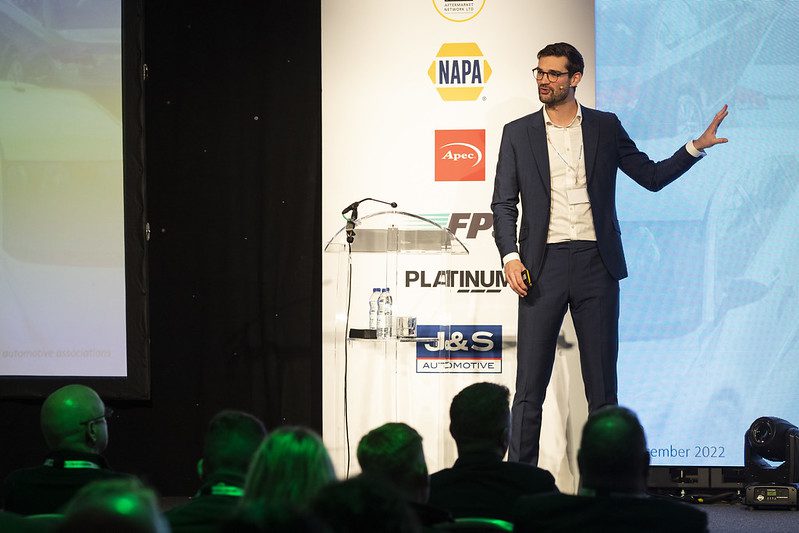
The biggest challenge is that of electrification. According to GIPA, 57% of electric vehicle drivers stated they have changed the workshop they use since they bought their vehicle, and 80% of workshop entries of these vehicles are going to franchised dealers.
“There is a demand that is building up as registrations of battery-electric vehicles increases,” added Hetet. “Currently, 15% of registrations are battery-electric, and we believe that by the beginning of 2026, 7% of all cars, not just registrations, will be powered by batteries, growing to 27% by the beginning of 2030.”
Customers stated that the reason they changed workshops was because they wanted to use a specialised EV garage, that had the knowledge and tools to work on their vehicles. This, Hetet told the IAAF Conference, means more needs to be done to ups kill the current workforce and take advantage of the new technologies.
Increasing diversity of the workforce
Finally, the stage was handed over to Julia Muir, of the Automotive 30% Club, to talk about the organisation and its aims for the automotive industry as a whole.
It cannot be denyed that the market is dominated by males, especially in executive postions, although in recent years more female representation at this level, and across the sector, has broken through. But while the Automotive 30% Club may sound like a quota-filling organisation, it is far from this.

“Our goal is to achieve 30% of key leadership roles to be filled by diverse women by 2030,” stated Muir. “In our industry, we need numbers, if we do not have an objective, things do not get done. It is not a quota, we need to ask, ‘what does good look like?’ and work to that.
“This is about businesses having a right culture and practices to build winning teams of the right people, as this diversity can build business profitability.”
There are business cases for building a diverse workforce, as Muir explained to the audience: “If you are in the top quarter for gender balance, you are likely to outperform your peer’s profitability by 25%. If you are in the top quarter for gender and diversity, you outperform your peers by 36%.”
She ended with a rallying call that built on the issue and challenges of skills: “We have a skills deficit, with workers being poached from various other automotive sectors, so now is the time to make the automotive industry more attractive to a more diverse workforce,” she concluded.
IAAF Conference 2022 is the biggest yet

It was clear from the day that the industry relished being back together, with this being the first IAAF Conference since the COVID-19 pandemic began. Taking place in a bigger room, with a bigger stage and bigger screens, this year’s event highlighted even more so that change is coming, and it can be for the better.
Overall, the message was clear. Yes, there are challenges ahead, and yes, they will be tough. But as IAAF Chief Executive Mark Field stated at the beginning: “It is time for the aftermarket to come out of the shadows. I cannot say we won’t disrupt things, but we will embrace change.”


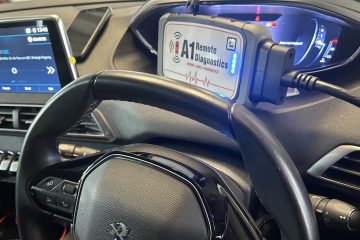

You must be logged in to post a comment.